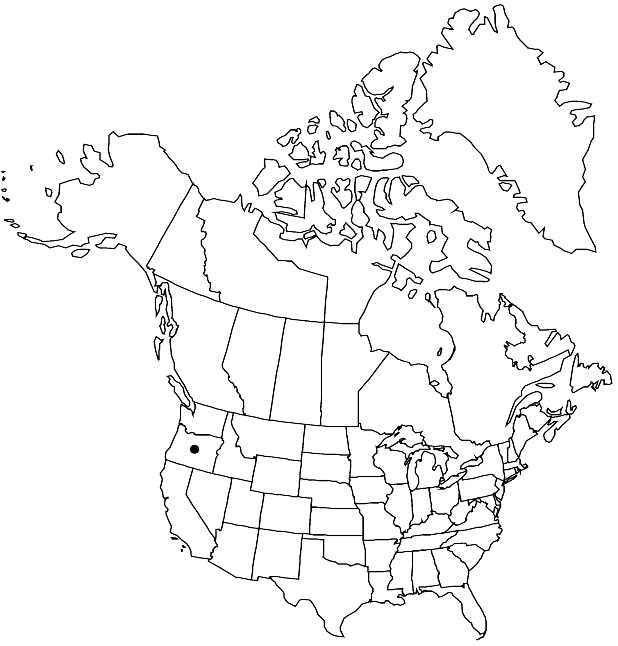Draba cyclomorpha
Amer. J. Bot. 4: 263. 1917.
Perennials; (cespitose, not pulvinate); caudex branched (with persistent petiole remains, branches sometimes terminating in sterile rosettes); scapose. Stems unbranched, 0.1–0.6(–1) dm, (thinly) pilose throughout, trichomes simple and stalked, 2- (or 3-)rayed, (often crisped), 0.1–0.8 mm. Basal leaves rosulate; shortly petiolate; petiole base and margin ciliate, (trichomes simple, 0.2–1 mm); blade (somewhat fleshy), oblanceolate to obovate, 0.4–1 cm × 2–5 mm, margins entire, surfaces glabrous or hirsute, abaxially usually with stalked, 2-rayed trichomes, 0.1–0.6 mm, rarely with fewer, simple ones, (midvein obscure), adaxially with almost exclusively simple trichomes, to 0.6 mm. Cauline leaves 0. Racemes 5–14(–20)-flowered, ebracteate, elongated in fruit; rachis not flexuous, pubescent as stem. Fruiting pedicels horizontal to divaricate-ascending, often curved upward or straight, 3–8(–10) mm, pilose as stem. Flowers: sepals ovate, 1.5–2.2 mm, pubescent, (trichomes simple and short-stalked, 2-rayed); petals yellow, spatulate, 4–5.5 × 1.5–2.5 mm; anthers oblong, 0.6–0.7 mm. Fruits oblong to oblong-ovate, plane, flattened, 3.5–9 × 2.5–4 mm; valves glabrous; ovules 8–12 per ovary; style 0.3–1 mm. Seeds ovoid, 1.4–1.9 × 1–1.2 mm.
Phenology: Flowering Jul–Aug.
Habitat: Basaltic talus, stony ridges
Elevation: 2500-3100 m
Discussion
Draba cyclomorpha was treated by Schulz, C. L. Hitchcock (1941), and R. C. Rollins (1993) as a variety of D. lemmonii. The two taxa are quite distinct morphologically and separated by nearly 1600 kilometers, justifying their treatment as distinct species (I. A. Al-Shehbaz and M. D. Windham 2007). Draba cyclomorpha is known to us only from the Wallowa Mountains.
Selected References
None.
